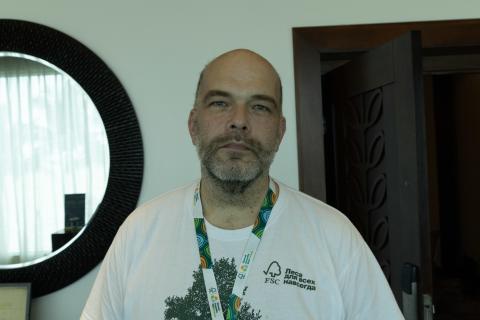Small but essential
Has FSC made the step-change needed to meet this ambitious goal in its Global Strategy to boost FSC certification in the tropics and among communities? Some exciting initiatives are underway, so we look at how the 2008 motions have fared and see what lies ahead.
“As a result of the Motion 27, there’s been an understanding that engaging smallholder is an important issue”, said Margareta Renström, Forest Certification Manager at WWF International who proposed the motion. “Smallholders are very difficult to reach.”
Over the last few months, FSC established the Smallholder Support Program to focus on outreach, marketing, networking and capacity building to boost smallholder certification. Currently 5.93 million hectares, representing 4.14% of the globally FSC certified are managed by smallholders.
SLIMF needs new approach
Mauricio Voivodic, Executive Director of IMAFLORA, a non-profit Brazilian NGO reignites an old discussion from social-south members regarding the FSC standard developed in 2004 to streamline certification for Small and Low Intensity Managed Forests (SLIMF).
“I still don’t think putting traditional, indigenous groups from tropical countries in the same basket as rich private family forests in the US or small producers from Finland is a good strategy. Their needs are completely different”, said Mr. Voivodic.
“This is why we have proposed a new motion this year to develop a mechanism for reclassifying SLIMF operations according to national or regional risk assessment,” he continued.
Under Motion 27 (2011), social and environmental risks would be identified through regional stakeholder processes, adapting and reducing the criteria to be more applicable for and understandable to local communities, whilst also reducing costs.
Differentiate with community labels
 “The SLIMF standard is a ‘hot potato’ and hasn’t helped smallholders gain access to certification”, said Jacob Ryding, Vice-President of Forests of the World – formally known as Nepenthes. “Community labelling would be a step forward,” said Mr. Ryding.
“The SLIMF standard is a ‘hot potato’ and hasn’t helped smallholders gain access to certification”, said Jacob Ryding, Vice-President of Forests of the World – formally known as Nepenthes. “Community labelling would be a step forward,” said Mr. Ryding.
The local market in Rosita in Nicaragua is swamped with illegal timber and smallholders who manage their forests in responsible ways can't compete with the prices. They have to get their products out on the national or international markets, using credible labels.
“We are also very close to launching the community label, which will hopefully help them get better returns on their investment in FSC,” reveals Mr. de Freitas.
An Advice Note, which includes the proposed text “From well managed forests of small or community producers”, is being submitted to the FSC Policy and Standards Committee at the General Assembly for approval.
“Coming into fruition, we have this exciting project with Fair Trade that will see the first products coming onto the market in the fall with both the FSC and Fair Trade labels”. Wooden floor maker Kährs from Sweden is likely to be the first company in the world to purchase dual-labelled material from Chile.



